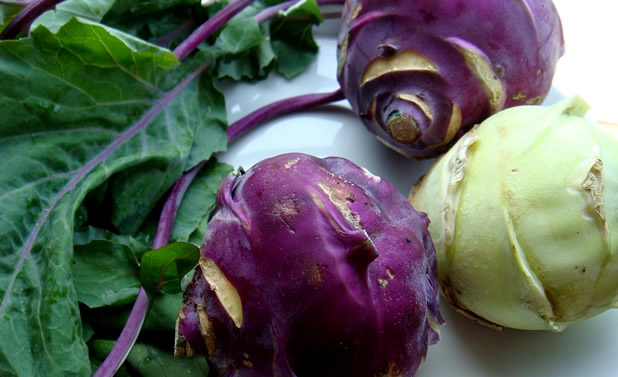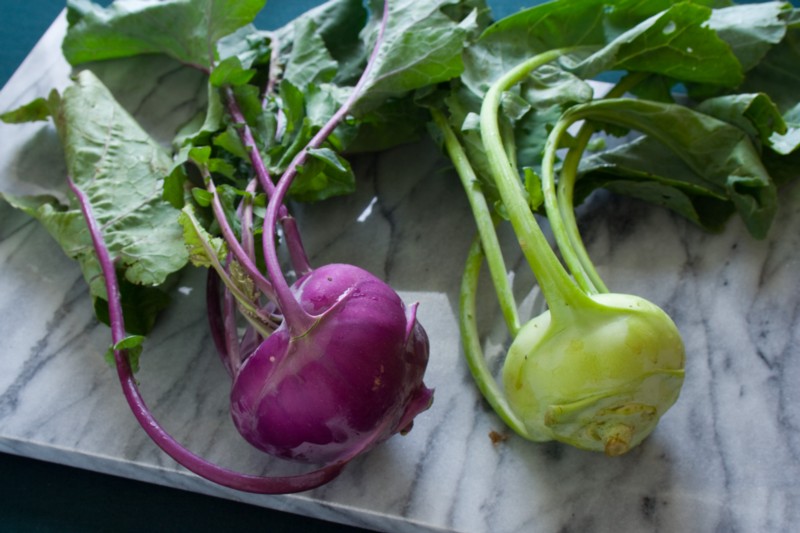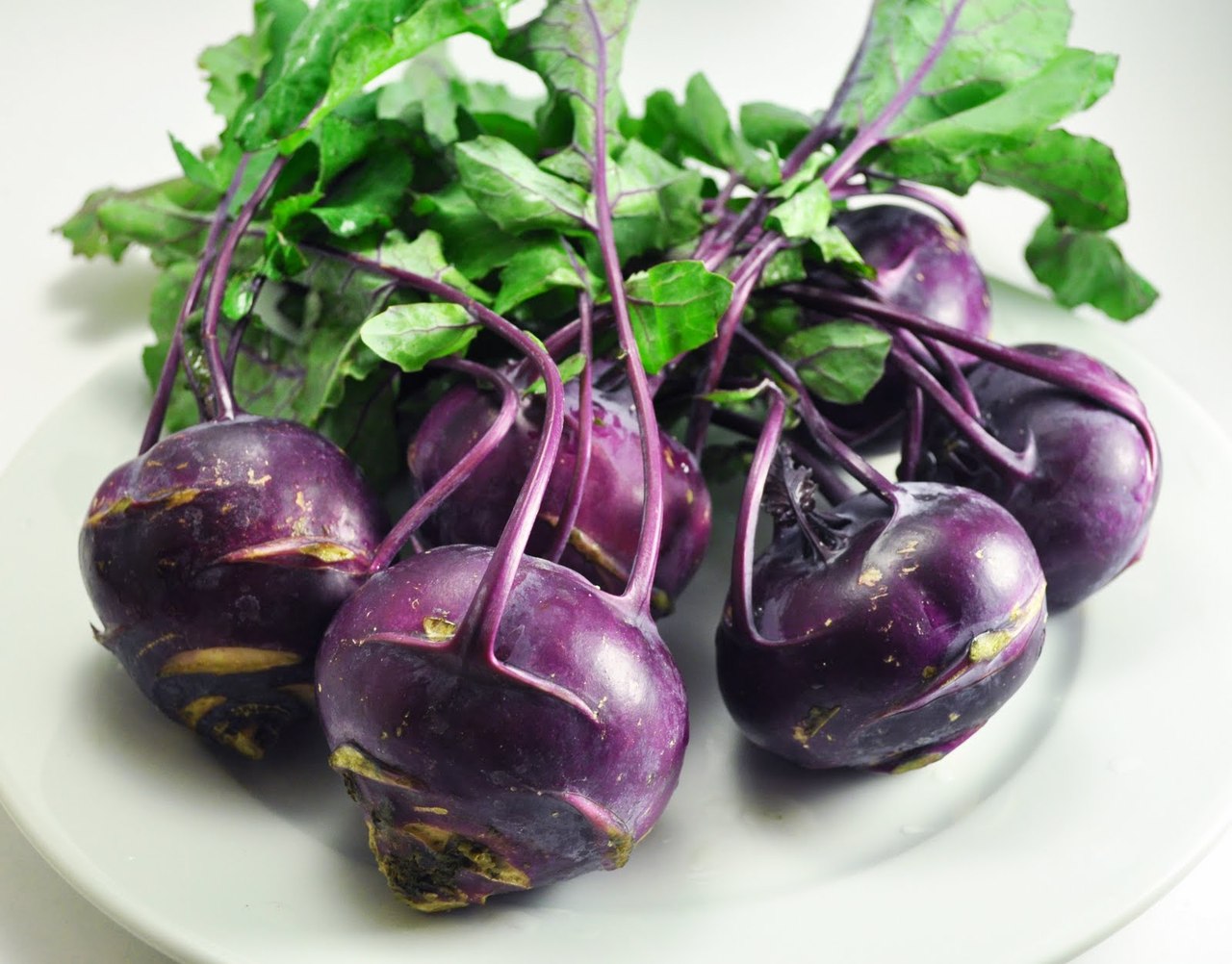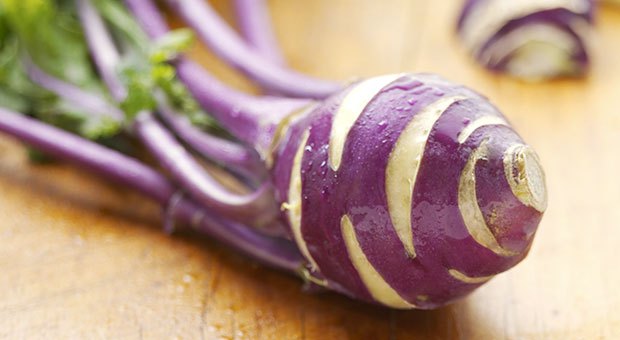Alabaster (Brassica oleracea var. Gongylodes) belongs to the family Cruciferous. He is the owner of the cabbage and is a two-year herbaceous plant with a spherical bloom (tuber) and successive leaves. Originated from northwestern Europe.
The popular name of alabasha in many countries is kohlrabi and comes from the German word kohl, which means cabbage and rabi, which means radish. Its leaves are large, oblong and dark green.
In the first year the stem of alabasha is short and its top part grows into a triceps (the trunk) - the portion that is consumed. Unlike the turnip, the edible tuber of alabasha is not a root, but a bloom of the stem immediately above the ground. Alabash has a lighter and sweeter taste than the turnip.
The plant is an excellent source of vitamin C. 100 g of the product provides the required daily dose of ascorbic acid. Although in more limited amounts, it contains choline, B-group vitamins, vitamin A.
Mineral elements are most common in potassium.
Also found are calcium, magnesium, phosphorus, copper, manganese, sodium.
Alabash falls into foods with low glycemic load. The combination of all these properties makes it extremely healthy and suitable for dietetic nutrition.
Health Benefits of Alabash Consumption.
The nutritional ingredients of this cute vegetable are mainly concentrated in the bulb that is used in the culinary industry. The leaves of the plant can also be used in the preparation of salads.
Characteristic of alabash is the presence in its composition of compounds called glucosinolates, which are decisive for its aroma and taste. Their metabolism in the body generates metabolites with antioxidant and anti-mutagenic effects.
It also contains a substance called TriHMA, which has an anti-tumor effect through a mechanism of programmed cell death (apoptosis).
Alabash strengthens the immune system, helps in anemia and avitaminosis, is useful in asthma, bronchitis, tuberculosis and radiation sickness. It has an urinary tract, relieves the symptoms of a cold.
How to choose and preserve alabash?
It is good to pick younger bulbs, about 5-6 cm in diameter, since they have the best nutritional qualities. Another indicator can be the leaves - the more juicy and gentle they are, the better the product is.
Alabash can be stored at a temperature of 0-1 degrees and high humidity (over 98%) for 3 weeks. The shelf life could be extended if placed in perforated polyethylene bags due to their moisture-retaining capabilities.
Avoid buying it from an outdoor stall if the temperatures outdoors are below zero, as the alabaster frosts easily.







